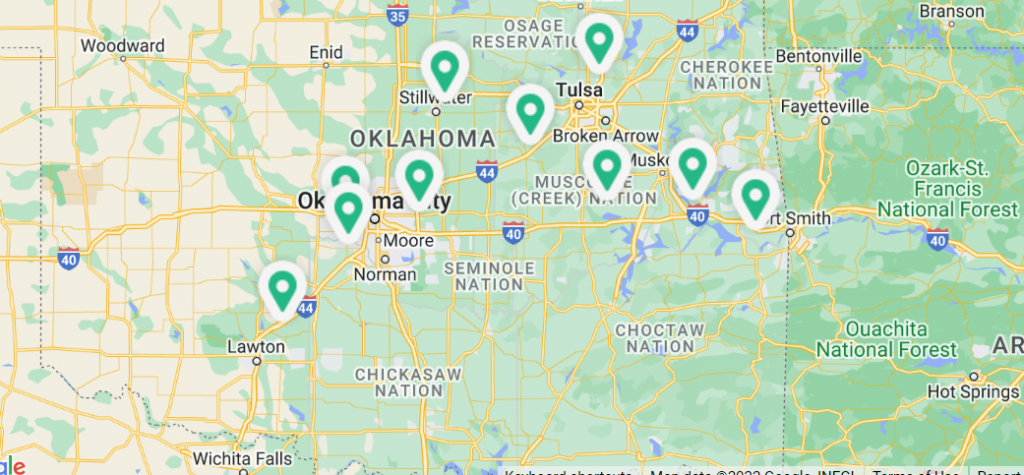
We hope that the next three weeks or so go by very quickly for you and your students! During the business of this time of year, take a minute to check out our lessons about Christmas trees!
Yes, there is an agricultural connection to Christmas trees. Our agency is the Oklahoma Department of Agriculture, Food, and Forestry!
Fun Fact!! There are Christmas tree farms in all 50 states in the USA!
Here’s a few MORE fun facts:
- Most Christmas trees are grown on tree farms. They are considered an agricultural product. For every Christmas tree harvested, three seedlings are planted in its place.
- There are close to 15,000 farms growing Christmas trees in the US and over 100,000 people are employed full or part-time in the industry.
- Until the 1930s, most Christmas trees grew wild in the forest or in abandoned fields. Early tree farming took place mostly on poor and marginal soils where some conifers could still thrive. Today almost all Christmas trees are cultivated as a specialty crop on farms suited for their production.
- In the US there about 1 million acres dedicated to tree farming. Each acre provides enough oxygen for 18 people.
- Tree farms reduce the amount of carbon dioxide in the air and help counter-balance global warming.
- Scotch pine and Virginia pine are the two most common species grown for Christmas trees in Oklahoma.
- Christmas trees grown and purchased in Oklahoma for use in Oklahoma stay fresh longer.
- Thirty-four to 36 million Christmas trees are produced in the US each year, and 95 percent are shipped or sold directly from Christmas tree farms.
- It takes an average seven years to grow a Christmas tree to the standard retail sale height of six feet.
- Their basic production characteristics make Christmas tree beneficial to the environment, to people and to animals. A broad network of roots holds the soil, and a continuous cover of grass between rows prevents surface erosion by water and wind.
- As a long term crop, trees allow a natural build-up of bird and animal populations.
- Like all plants, conifers growing for eventual harvest as Christmas trees remove carbon dioxide from the atmosphere as they grow and produce oxygen as a byproduct. One acre of Christmas trees produces enough exygen for 18 people.
- Discarded Christmas trees left in the yard provide welcome shelter for chickadees, nuthatches and other small birds. Redecorate the trees with treats for the birds – strings of popcorn, cranberries, suet balls stuffed with sunflower seeds, peanuts and chunks of coconut, apples, balls of peanut butter mixed with oatmeal flakes and pieces of stale cakes and cookies. Don’t forget to take off the tinsel. It can make the birds sick.
- Christmas trees are biodegradable, which means they will break down and become part of the soil again. The branches and needles make great mulch in home gardens, especially for plants that like acid soil. The nutrients contained in an old tree might one day end up as part of a new Christmas tree in the future.
The idea of decorating an evergreen tree as part of winter solstice celebrations comes from many lands and cultures. Coniferous trees have needle-like leaves and produce cones. These trees do not lose their needles in the fall. The needles drop off a little at a time during the year, especially in late summer. Although the trees remain green, they are not growing in the wintertime.
Plants that remain green in the winter remind us that spring will return, and once again the land will be lush and productive.
Through Ag in the Classroom you will find Christmas Tree Lessons for Grades PreK-5th grade. Students can learn about the history of Christmas tree farms and Christmas tree markets. They will create handmade Christmas trees that imitate the geometry found in nature. Older students can learn how artificial Christmas trees became popular and explore the advantages and disadvantages of using natural or artificial trees.
Don’t forget to check out all the wonderful Christmas Tree Farms across the state!

Check out these awesome resources from Ag in the Classroom.















